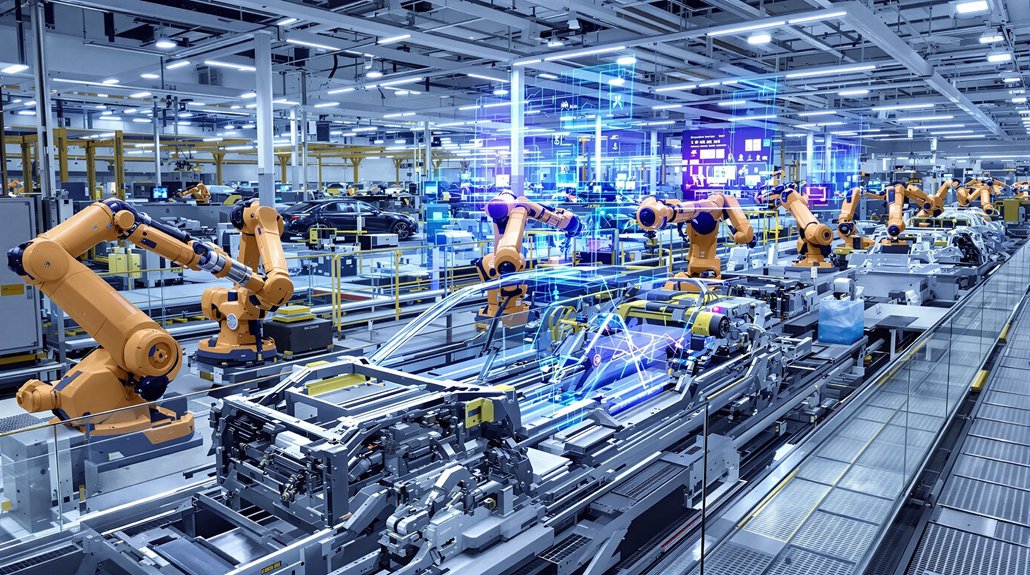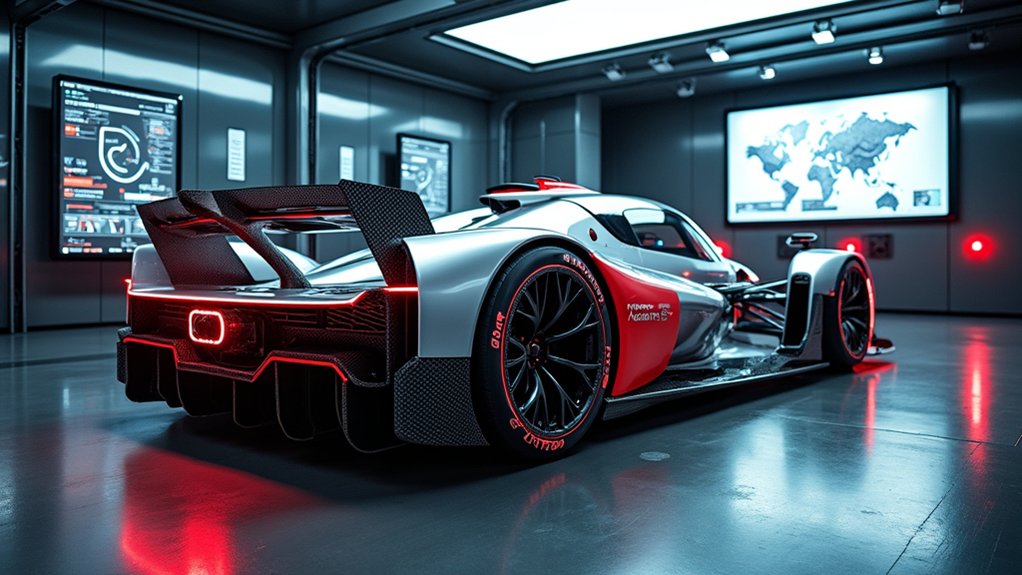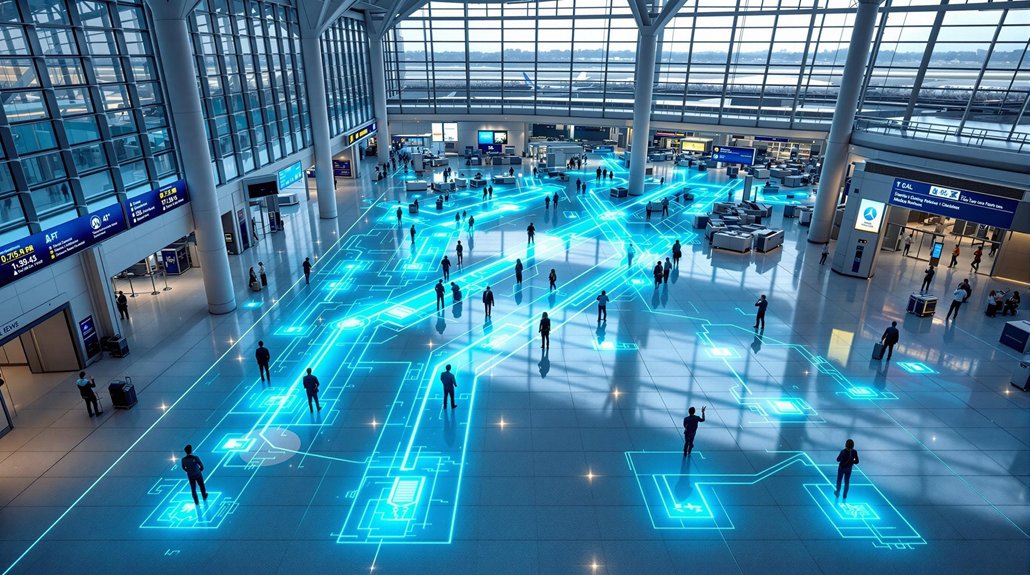While most people were busy arguing about whether AI would steal their jobs, the automotive industry quietly went ahead and married the technology. Nearly 80% of car manufacturers now use some form of artificial intelligence. That’s up from 62% just two years ago. The honeymoon phase? Long gone. This is serious business now.
The automotive industry didn’t debate AI’s threat—it quietly married the technology while others argued.
The numbers are stupid big. The AI automotive market sits at $7.7 billion today. By 2033? Try $134.3 billion. That’s a 37.4% compound annual growth rate, for those keeping score at home. Even the suits in Detroit can’t ignore math like that.
So what’s AI actually doing in these factories? Everything. Assembly lines run faster. Quality control catches defects humans miss. Predictive maintenance cuts downtime by 30%. One in five manufacturers has gone full AI integration across design, manufacturing, supply chain, the works. The rest? Playing catch-up. A European manufacturer saw throughput jump 28% higher after implementing AI-coordinated smart factory operations.
Here’s where it gets wild. Fifteen percent of new vehicles rolling off lots this year have AI-based self-driving features. Not just cruise control with a fancy name. Real autonomous capabilities. Lane-keeping, automatic parking, traffic navigation that actually works. Some manufacturers plan to release fully autonomous vehicles in cities by year’s end. Good luck, pedestrians. The hardware segment alone captured 47% of market share in 2023, processing sensor data fast enough to keep these metal beasts from plowing into things.
The generative AI piece alone will balloon from $592 million to $3.9 billion by 2034. That’s algorithms designing car parts, optimizing supply chains, basically doing the thinking humans used to get paid for.
Driver experience? Transformed. Four in ten new cars sport AI assistants that actually understand when you mumble directions. These systems learn your habits, suggest routes, connect to your phone without making you want to drive into a tree. Groundbreaking? Maybe. Creepy? Definitely. Much like healthcare AI, these systems leverage natural language processing to understand driver requests and preferences.
Safety regulations keep getting stricter. Emissions standards too. AI handles both, monitoring driver behavior, preventing accidents, filing compliance reports faster than any human could. Manufacturers partnering with AI specialists shave 14 months off deployment and cut costs by 30%.
The automotive industry didn’t wait for permission. It saw the future and floored it. Now everyone else is watching the taillights disappear.
References
- https://syndelltech.com/ai-in-automotive-industry-2025/
- https://market.us/report/ai-in-automotive-market/
- https://www.precedenceresearch.com/generative-ai-in-automotive-market
- https://www.ciklum.com/resources/blog/future-of-automotive-ai-2025
- https://www.spglobal.com/automotive-insights/en/blogs/2025/07/ai-in-automotive-industry









